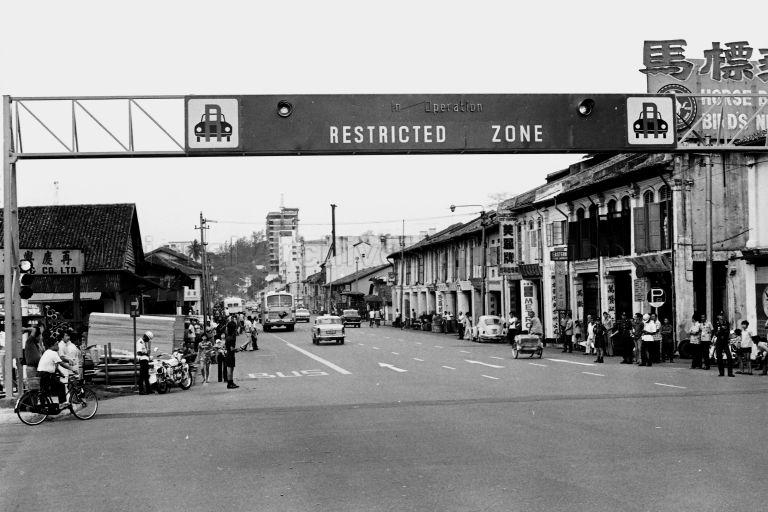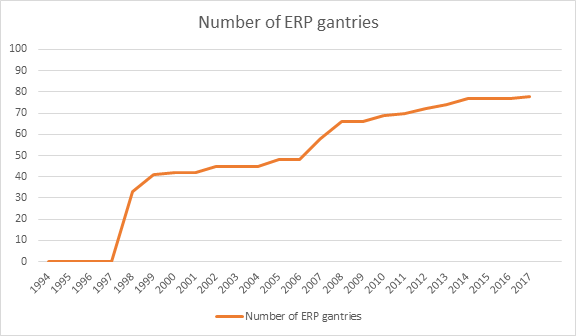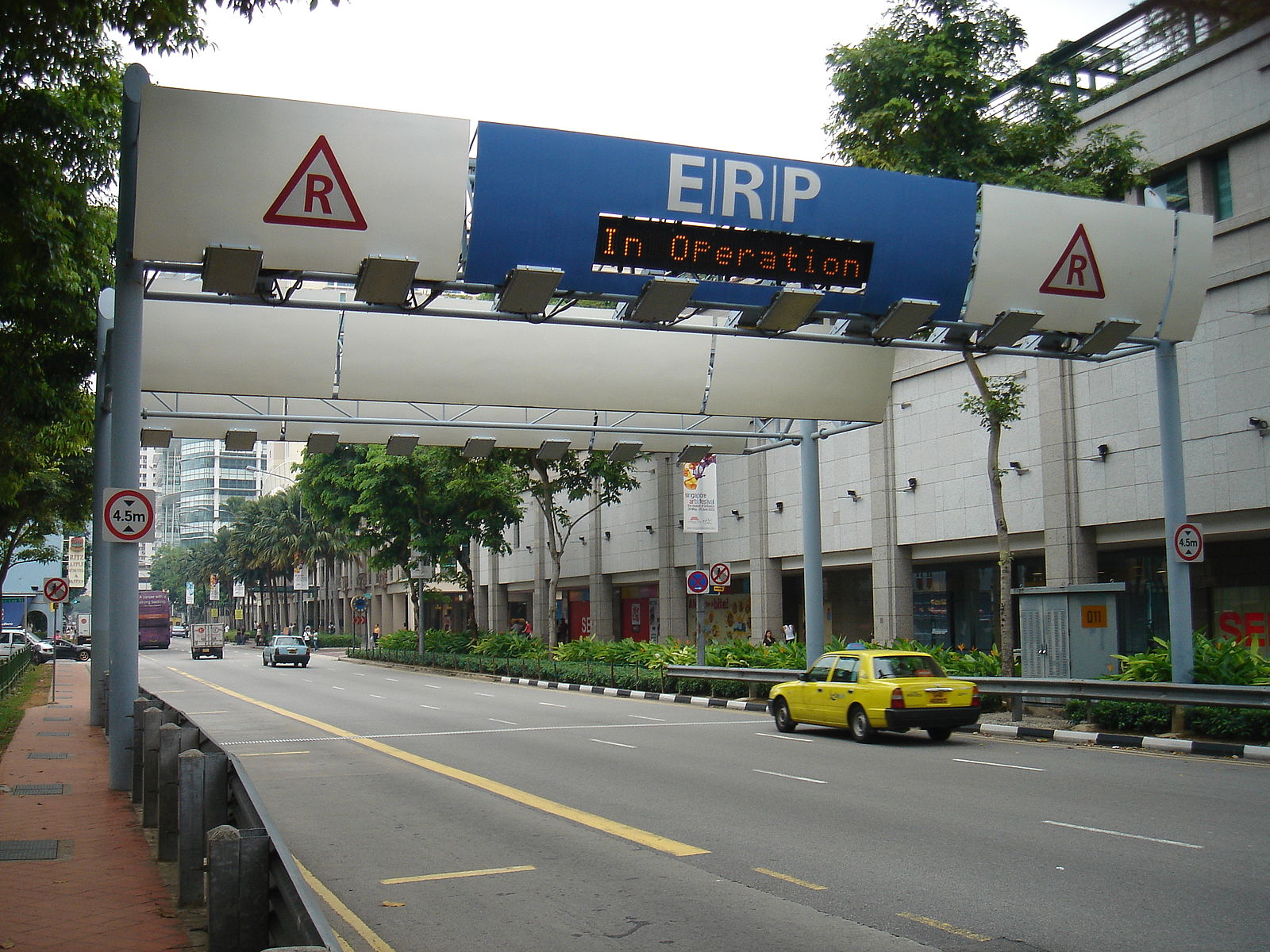Need a reason to feel old? Well, it has been 20 years since the Electronic Road Pricing (ERP) system was first implemented in 1998.
ERP considered a step up
As old and despised as this system has become, it is nonetheless considered a technological marvel when it was first implemented.
Previously, before we had the ERP, the Area Licensing Scheme (ALS) required motorists to pay a toll to enter certain zones.
 via National Archives of Singapore
via National Archives of Singapore
It was a low-tech solution with real people sitting in booths monitoring vehicles manually for displaying the appropriate decal on the windscreen showing the driver had paid the toll.
As compared to the ALS, ERP removes subjective judgement of humans and ensures fairness of pricing as it is a usage-based taxation system: Motorists who use the roads less frequently or travel during non-ERP hours pay less or do not pay at all.
The ERP is also fully-automated and reduced the risk of human error.
Steady increase in ERP gantries
Within the first year of its implementation, 33 ERP gantries were set up between 1997 to 1998.
The first phase of implementing ERP included gantries on the ECP (one near Fort Road, and the other on Ophir Road), as well as on the PIE and CTE.
Since then, the number of ERP gantries has increased steadily.
As of 2017, there are 78 ERP gantries located all over Singapore.
 Data via Gov.sg.
Data via Gov.sg.
In its initial phases, ERP gantries were set up mostly on expressways and within the city area.
However, the network has extended to arterial roads outside the city in response to heavy city-bound traffic. Some of these roads include Thomson Road, Bendemeer Road and Kallang Road.
As with laws and regulations, ERP gantries that have already been set up are unlikely to be taken down as they remain permanent fixtures, signalling the start points of tolls that expand outwards of the city area.
ERP charges
During the first two years of implementation, peak charges for cars were around S$2.
Today, car charges peak at S$6, although ERP charges average S$1 to S$2 to enter the Central Business District during peak hours.
In 2015, the total revenue collected from ERP was over S$150 million.
[related_story]
Adjustments in pricing
Over the years, the Land Transport Authority has tweaked the charges and time periods to encourage motorists to switch their time, route or mode of travel.
According to LTA, ERP rates are determined by a quarterly review of traffic speeds of priced roads during the school holidays in June and December.
Based on an optimal speed range of 20 to 30km/h on arterial roads and 45 to 65km/h on expressways, ERP rates are adjusted accordingly.
A higher price can deter a certain amount of vehicles from using a road, and hence, facilitate a more optimum speed.
ERP 2.0
But as all good things come to an end, likewise, one iteration of such money-vacuuming machines will also cease to exist.
Only to be replaced with another iteration of it.
From 2020, we will no longer see the blue-and-white ERP gantries around the island.
Instead, the next generation ERP system will rely on satellite navigation technology and a GPS-tracking on-board unit (OBU) within vehicles.
This new system will determine when motorists enter a priced zone, as well as the distance they clock.
Distance-based charging will be implemented at a later stage.
Top photo from Wikipedia
If you like what you read, follow us on Facebook, Instagram, Twitter and Telegram to get the latest updates.
